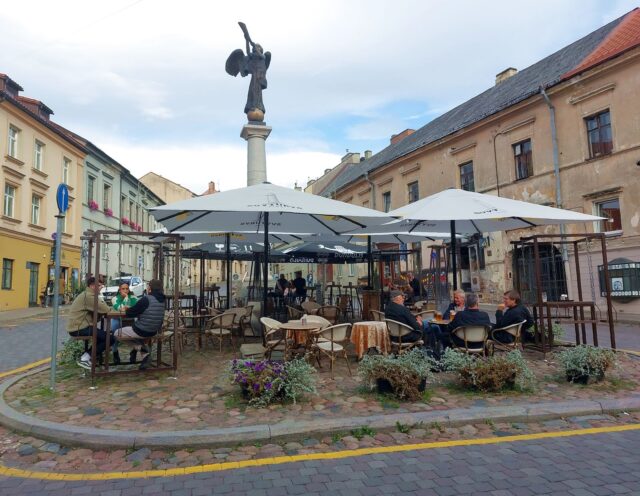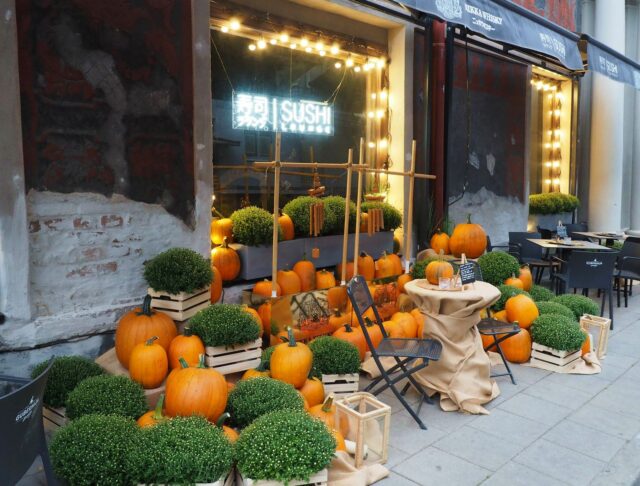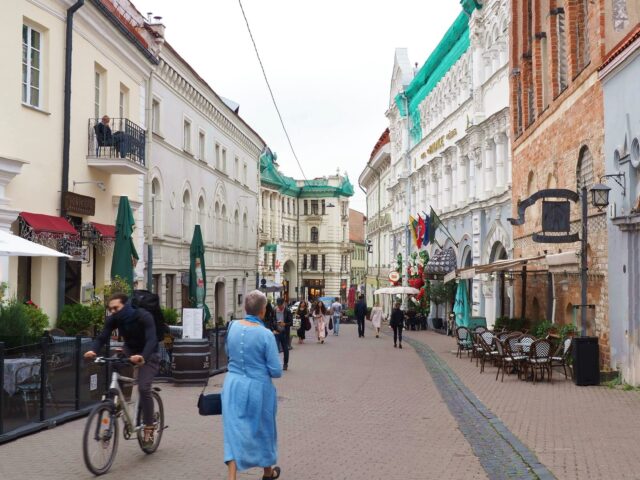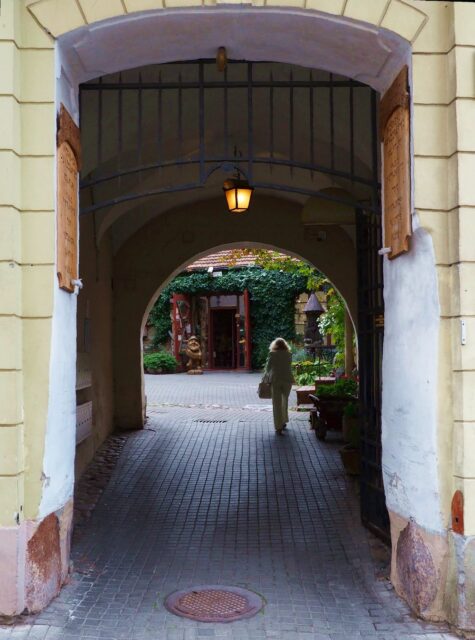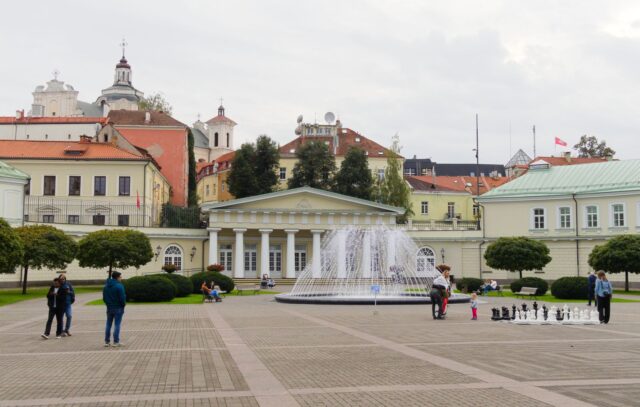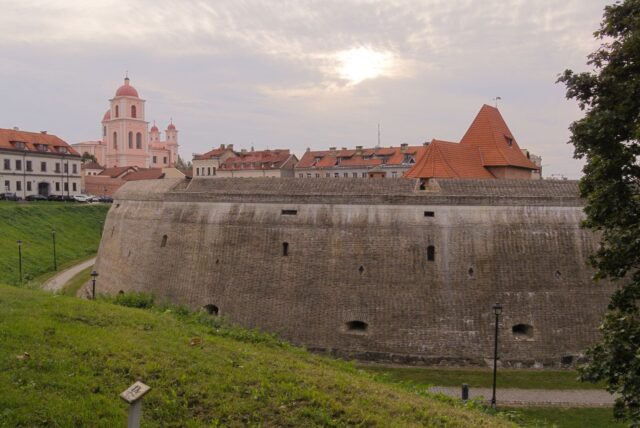Lithuania is one of the dynamic and rapidly evolving states on the shores of the Baltic Sea in northern Europe. Once a great European power, Lithuania and its capital Vilnius have a long and fascinating history and the scars (and beautiful historical architecture in the old town) to prove it. We made a trip to Vilnius (and Lithuania) in September, and were impressed by the city, truly enjoying its relaxing and lively atmosphere. Two things make Vilnius even more attractive: English is widely spoken in the city, and the currency in Lithuania is Euro.
My recommendation for visitors who have a day or two in Vilnius is to focus on the historic city center. It is large enough – one of the largest in Europe that I have visited – for multiple days of organized and unorganized tours. Exploring the historic center by foot or bicycle is easy and safe. There is a certain amount of traffic on some streets, but the old town has plenty of pedestrian streets and bicycle lanes. You never have to go thirsty or hungry in the city center because there are plenty of cafes, restaurants, and bars for every taste – especially restaurant scene is very international.
Despite the city’s turbulent history, plenty of ancient buildings are there for all of us to see and explore. The buildings in the old town center represent the Gothic, Renaissance, Baroque, and Classical styles of architecture. The ruins of the Castle of Gediminas on a hill next to the river Neris is visible in the old town, and the Bastion of Vilnius on a higher hill stands on the other side of the old town. There are so many churches in the city center that it makes a traveler ponder why did the residents bother to build so many of them. Different flavors of religions have always lived together in Vilnius, but each religion has to have its own church. In the old town district alone, there are 28 churches, which makes it one for every 700 inhabitants. 21 are Roman Catholic, 4 are Russian Orthodox, and Lutheran, Reformed and Eastern Rite Catholic communities have one church each. One of the key buildings of the city, the original cathedral is from 1387, but it had to be partially rebuilt in 1801.
The historic centre of Vilnius was designated a Unesco World Heritage site in 1994.
The population of Vilnius was 546,000 in 2021.
An artistic neighborhood in the city has declared itself as a republic of Uzupio (Uzupis). The declaration of independence was given on April Fool’s Day 2017. What was earlier known as a problematic neighborhood has turned into a charming district of students, entrepreneurs, artists, and visitors who only have to cross a bridge from the old town to explore the lovely neighborhood of shops, cafes, and galleries.
The first documented references to Vilnius are from 1128. In 1323, the town became capital of Lithuania governed by Grand Duke Gediminas. A Roman Catholic bishopric was established in Vilnius in 1387. From there on, the town grew and prospered until the 17th century. Russians occupied the town in 1655–1660, Sweden took over in 1702 and 1706, and the French occupied it in 1812. During the World War I and II Vilnius suffered heavy damage. First, Poland took over the city until Soviet Union annexed Lithuania in the early days of the World War II. In 1991, Lithuania could restore its independence with Vilnius as its capital.

